
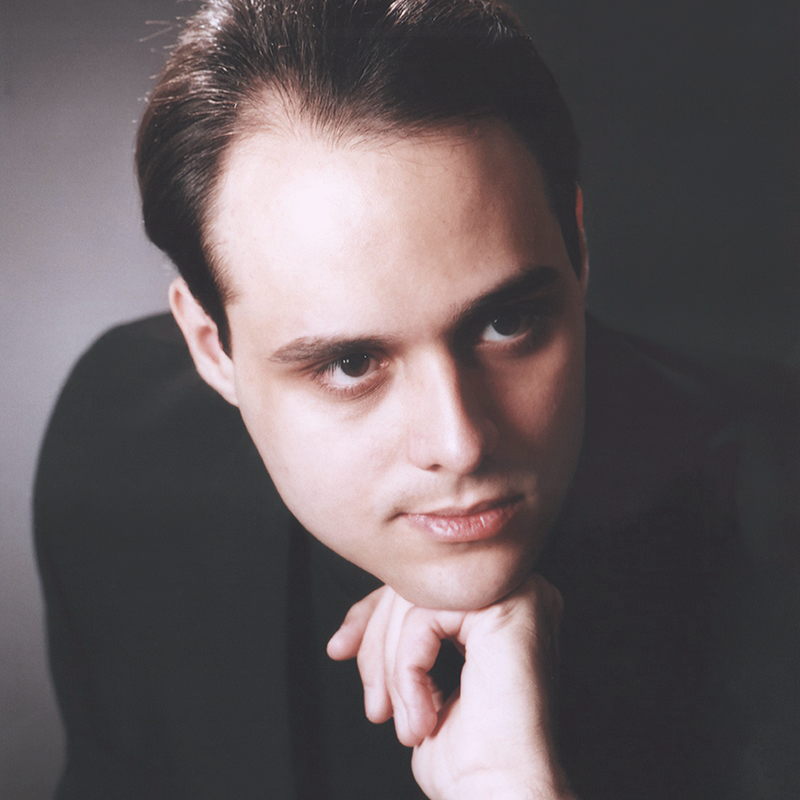
Jan Emanuel Abras
Sitwa Raymi
Duration: 9'
Choir: mixed choir
Instrumentation details:
trumpet in C
tenor drum
tape
Sitwa Raymi
Translation, reprints and more
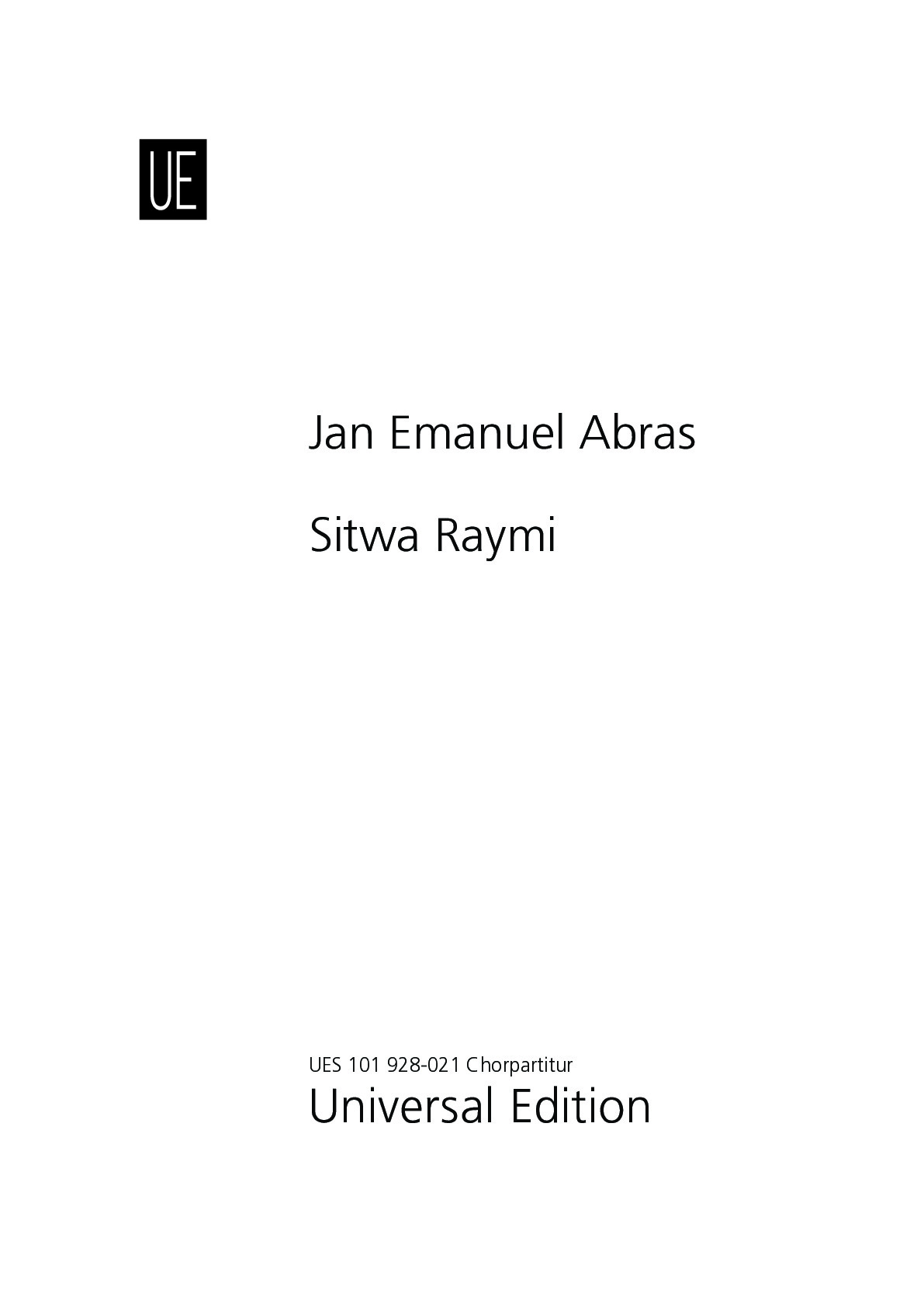
Jan Emanuel Abras
gemischter Chor (Sitwa Raymi)Type: Chorpartitur
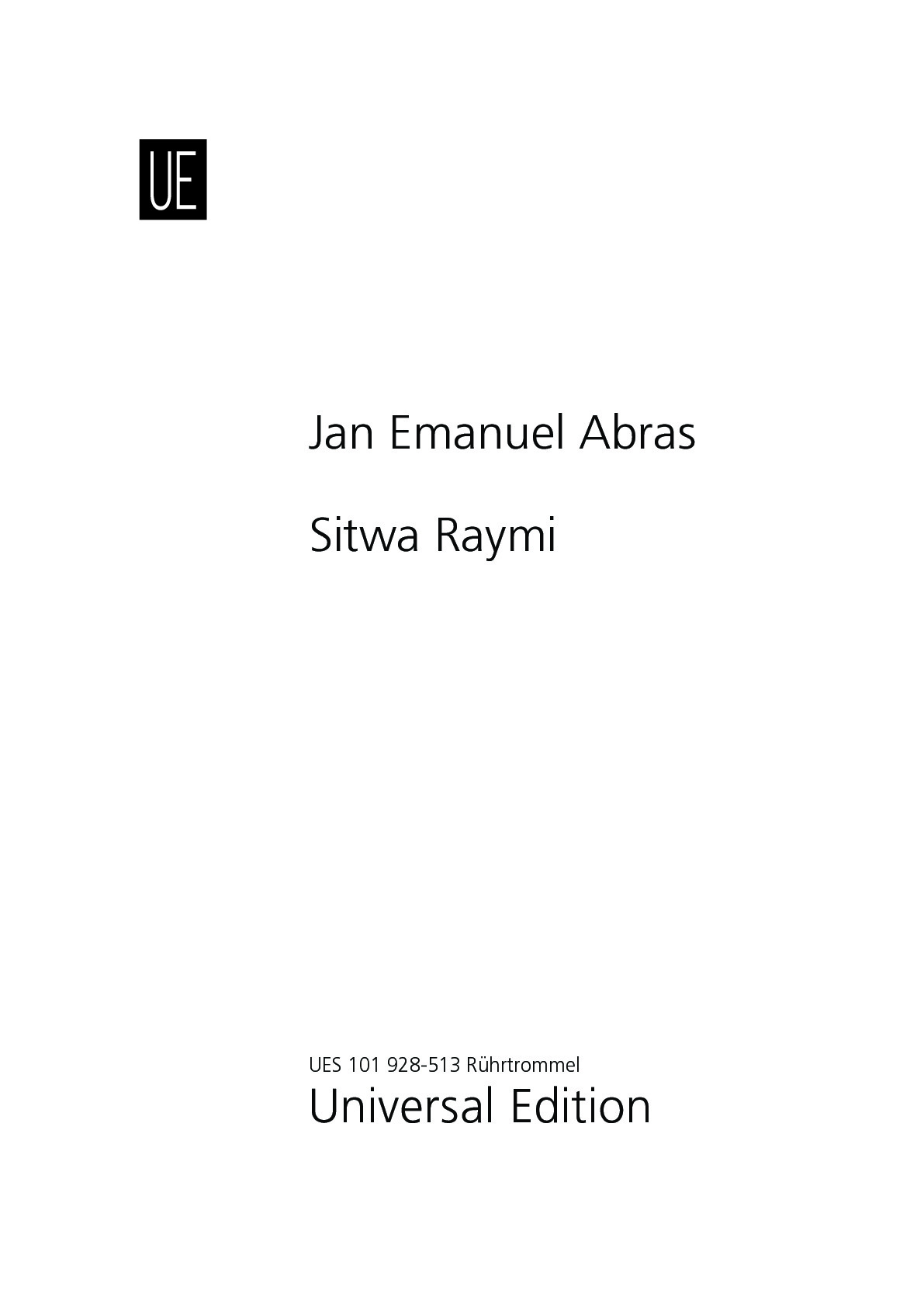
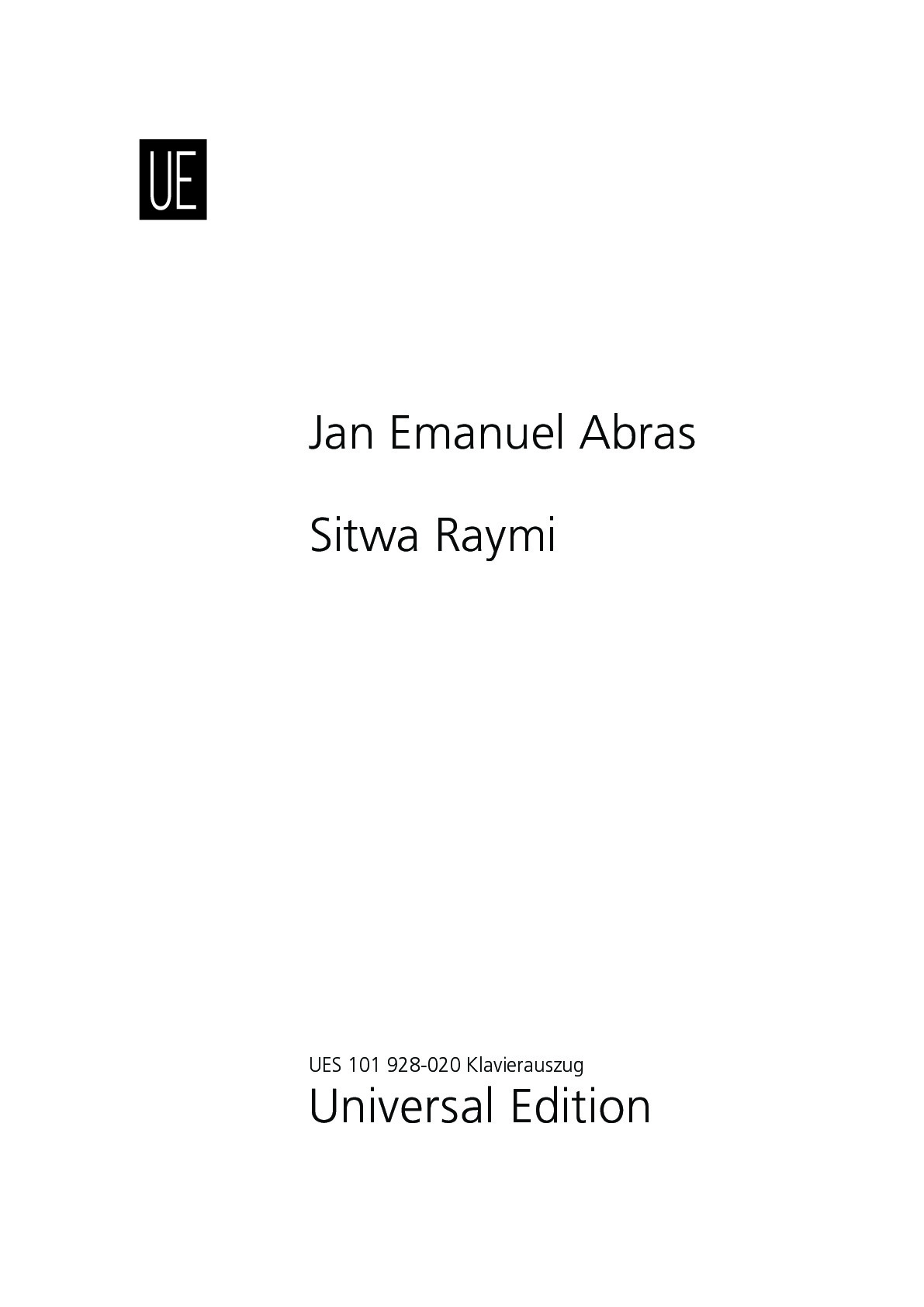
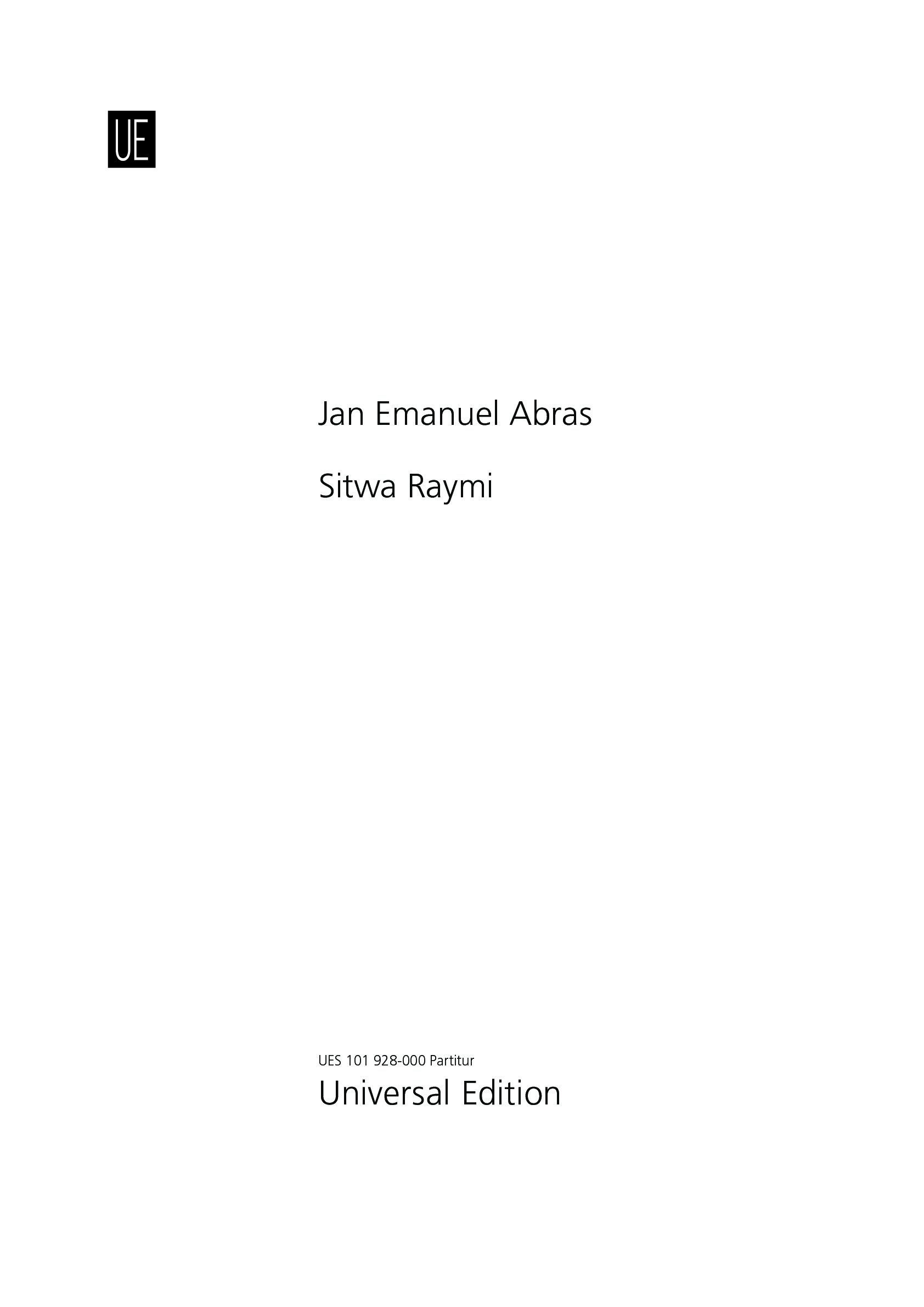
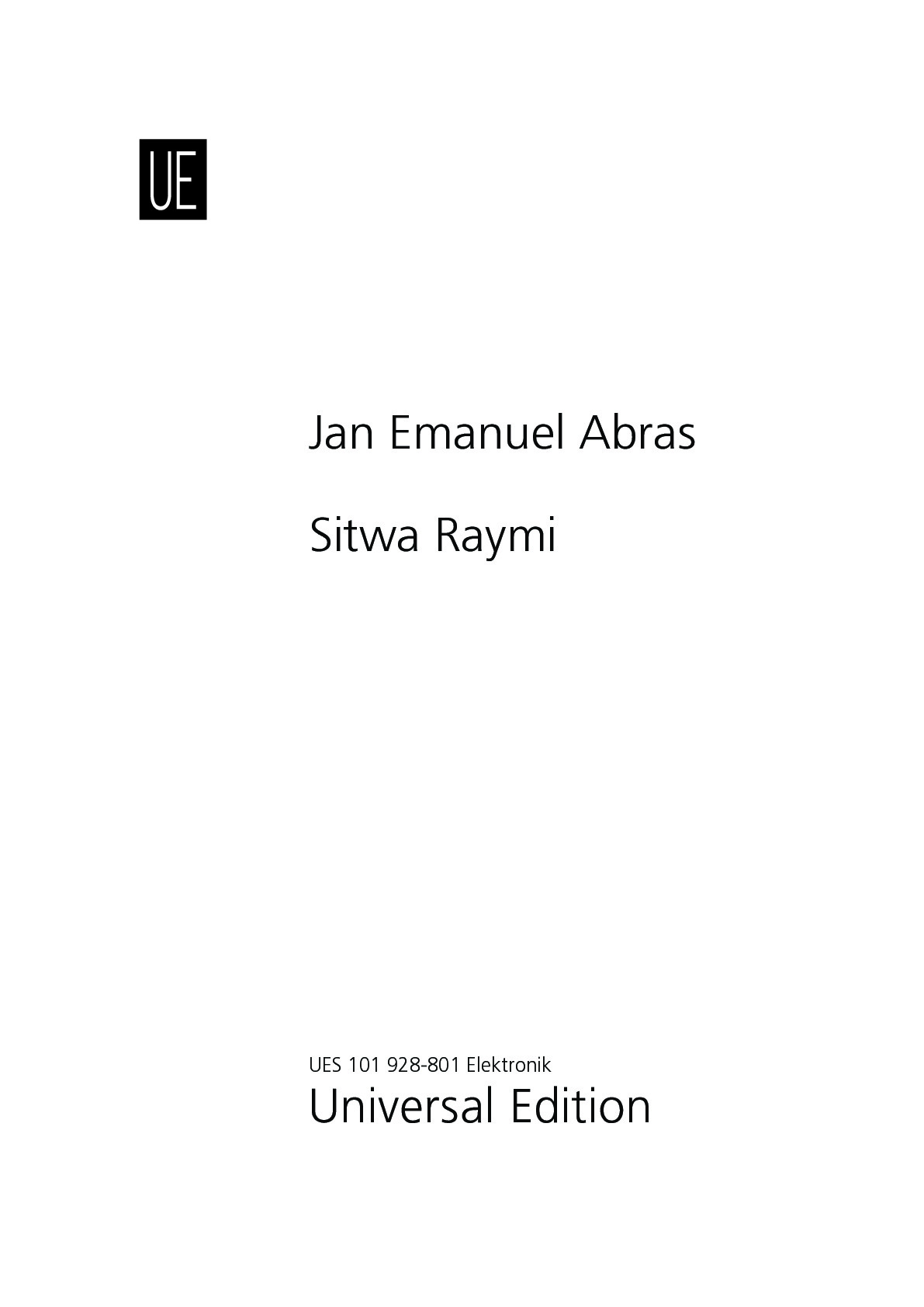
Sample pages
Audio preview
Video
Work introduction
Sitwa Raymi (2014) takes the listener to the sound world of the ancient Inca Empire and its religion in a solemn work for mixed choir, chamber ensemble and electronics. As a European artist and scientist, my first trip to Peru was a fascinating opportunity to experience in person what I had learned as a historian and musicologist. And years later, as a composer and conductor, I felt the need to express through music my view of the amazing South American culture and people I found in Peruvian locations such as Lima, Cusco, Qenko, Puka Pukara, Tambomachay, Sacsayhuamán, Písac, Yucay, Ollantaytambo, Machu Picchu, Aguas Calientes, Nazca, etc.
During the 16th century, Sitwa Raymi was an important religious ceremony of the Inca Empire in South America. According to Spanish chronicler Cristóbal de Molina (1529–1585), it was created by Emperor Inca Yupanqui and took place yearly in Cusco to ask the Maker (Viracocha, the creator deity) for protection against diseases caused by floods. However, this ceremony was also related to livestock and agricultural production, politics and social relations. My work Sitwa Raymi immerses the listener in an imaginary aural journey to attend this religious celebration through a piece of classical music that combines extended performance techniques with pentatonic harmony and Baroque contrapuntal procedures.
The “First prayer to the Maker”, collected by Molina, was said by Inca priests during Sitwa Raymi. It praises Viracocha for forming humanity while asking about his celestial dwelling and begging him for a peaceful life, protection, etc. I used this sacred poem as a starting point to create my work from an ekphrastic and intertextual perspective by transmedializing literary structures (such as patterns, proportions, etc.) into musical ones. I then added an electroacoustic soundscape with auditory illusions (mainly made from Andean sound sources related to religious ceremonies) that merges with the sounds of the choir, accompanied by a trumpet and a tenor drum (which may be respectively substituted by Andean instruments known as pututu and wankara).
My work Sitwa Raymi was commissioned by the Ensamble Vocal Cámara XXI of Buenos Aires and premiered by the same group, on 14 June 2015, under the direction of Miguel Ángel Pesce. This first performance took place at the St. Charles Borromeo’s Basilica of that city during the 20th Series of the Don Bosco Concerts. Dedicated to the aforementioned artists and in memory of Daniel Sartori, this work has also been performed at other venues, including several churches of Buenos Aires (St. Peter González Telmo, St. Ignatius of Loyola, Our Lady of Mount Carmel, Most Holy Sacrament Basilica, St. Ildephonsus, Patronage of St. Joseph, etc.). Sitwa Raymi was included on the CD Bavel (2016), performed by the Ensamble Vocal Cámara XXI, under the baton of Miguel Ángel Pesce, and released by this group in Argentina with the financial support of the Argentine National Institute of Music.
Dr. Jan Emanuel Abras, Ph.D. (born 1 February 1975 in Stockholm, Sweden)
What is necessary to perform this work?
Choir (SATB)
Trumpet in C (with cup mute)
Tenor Drum (with soft mallets)
Electronics (pre-recorded)
Electroacoustic sounds are stored in stereo audio files. By using any capable device, an operator is required to play them through a pair of loudspeakers, placed as required, while adjusting the volume as indicated in the score/part. To obtain these audio files, please use the contact form on the composer's website (www.janemanuelabras.com).
